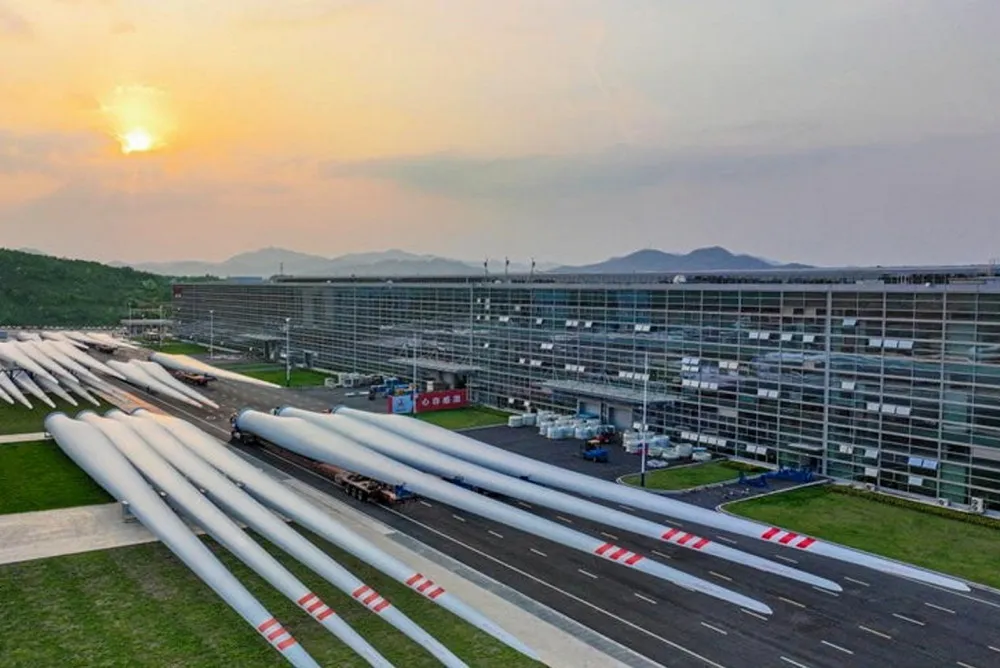Chinese wind turbine factories in Kazakhstan help pave ‘road to Europe’
ANALYSIS | Envision and Sany's establishment of plants in Kazakhstan part of 'broader play' that stretches all the way to Europe, say analysts

Plans from two of China’s leading wind turbine makers to open factories in Kazakhstan lay the groundwork for future exports to Europe, as well as helping them duck potential tariffs, say analysts.
Envision and Sany both announced last week they had reached agreements to open turbine factories in the Central Asian country, just months after China and Kazakhstan signed a new cooperation agreement.
Central Asia has proved fertile ground for Chinese OEMs given the close political ties China has with countries in the region and the lack of domestic turbine-making competitors.
Global wind industry expert Shashi Barla said he was “a little bit surprised” that Envision and Sany chose Kazakhstan to open factories rather than neighbouring Uzbekistan, which he said is by “far the biggest” wind market in Central Asia.
Barla said Central Asia as a whole has been picking up as a wind power market in recent years and has “immense potential,” with recent COP climate summit host Azerbaijan another emerging demand centre.
Kazakh factories could cut cost of transport to Europe
Attractive as the Central Asia market may be, Barla believes the new factories are a “broader play” by the OEMs, one potentially extending all the way to Europe.
Transporting turbines to Eastern Europe from Kazakhstan rather than manufacturing bases in inland China could “cut logistical costs by half,” said Barla. Kazakhstan could therefore act as a springboard for the global ambitions of Envision and Sany.
The main transport link between China and Europe had for a long time been the Northern Corridor, a rail freight system that runs through Russia and has a cargo capacity of over one hundred million tonnes.
Russia’s invasion of Ukraine sent Northern Corridor freight volumes tumbling, with EU and NATO members reluctant to have their imports touching Russian soil. This trend has begun reversing, however, thanks to the Middle East crisis and Houthi rebels in Yemen targeting Red Sea shipping.
Another more palatable route politically for the West is having Chinese goods transported through the Middle Corridor – a loosely defined overland trade route linking China and Europe via countries including Kazakhstan, Azerbaijan and Turkey.
Andrea Scassola, vice president of wind at Rystad Energy, said that transporting goods from Kazakhstan through this corridor could save a week compared to the northern route through Russia – if Kazakhstan, Azerbaijan and Georgia make progress on “streamlining rules to facilitate the flow of goods.”
Trade through this Middle Corridor, which involves goods crossing the Caspian Sea, increased fourfold in just two years to 2.3 million tonnes in 2023, and the World Bank says it could hit 11 million tonnes by 2030.
Given Chinese OEMs' struggles establishing wind turbine factories in Europe and the twin trade disruptions caused by war in the Middle East and Ukraine, Scassola said the Middle Corridor, “largely overlooked during the heyday of American globalisation,” has become “comparatively more attractive.”
Although Envision is also developing its Saudi base, and Sany has made noises about a European factory previously, Scassola said these plans are not "mutually exclusive" to exporting to Europe from Kazakhstan but rather "complimentary pathways".
‘Made in Kazakhstan label could help OEMs skirt tariffs’
Kazakh manufacturing bases could bring another benefit to Chinese turbine makers, said Barla.
By setting up production in the country, “Chinese OEMs might be able to label their goods as originating from Kazakhstan,” helping them skirt potential future EU tariffs on wind turbines, with the bloc having slapped steep tariffs on Chinese electric vehicles this year.
This would echo the tactic employed by Chinese companies under Donald Trump’s first term as US President, when they shifted production to Southeast Asian countries like Vietnam to avoid ‘Made in China’ labels.
Trade tensions between the EU and China over wind turbines have been steadily escalating recently. The bloc is currently pursuing a wide-ranging anti-subsidy probe against Chinese OEMs that China has blasted as “economic coercion.”
Scassola agrees that it “makes sense for Chinese OEMs to diversify their supply base away from their home market to a third country.”
Kazakhstan has a “strategic position” given it falls within China’s Belt and Road Initiative, has an Enhanced Partnership and Cooperation Agreement with the EU and a free trade agreement with Russia.